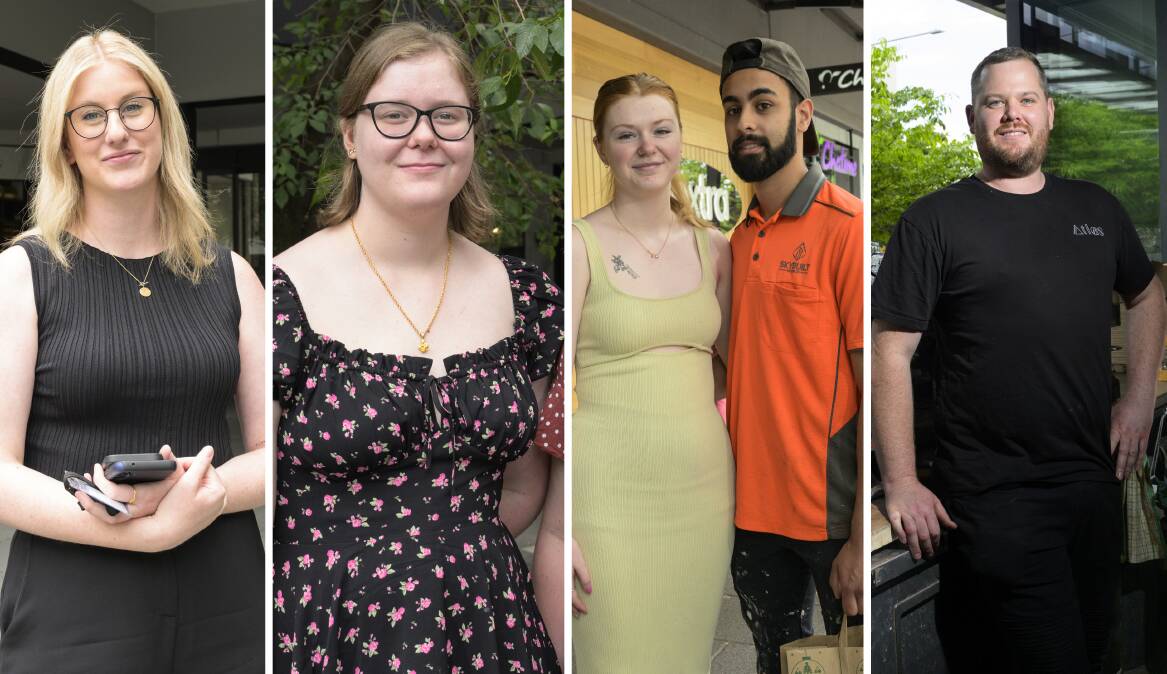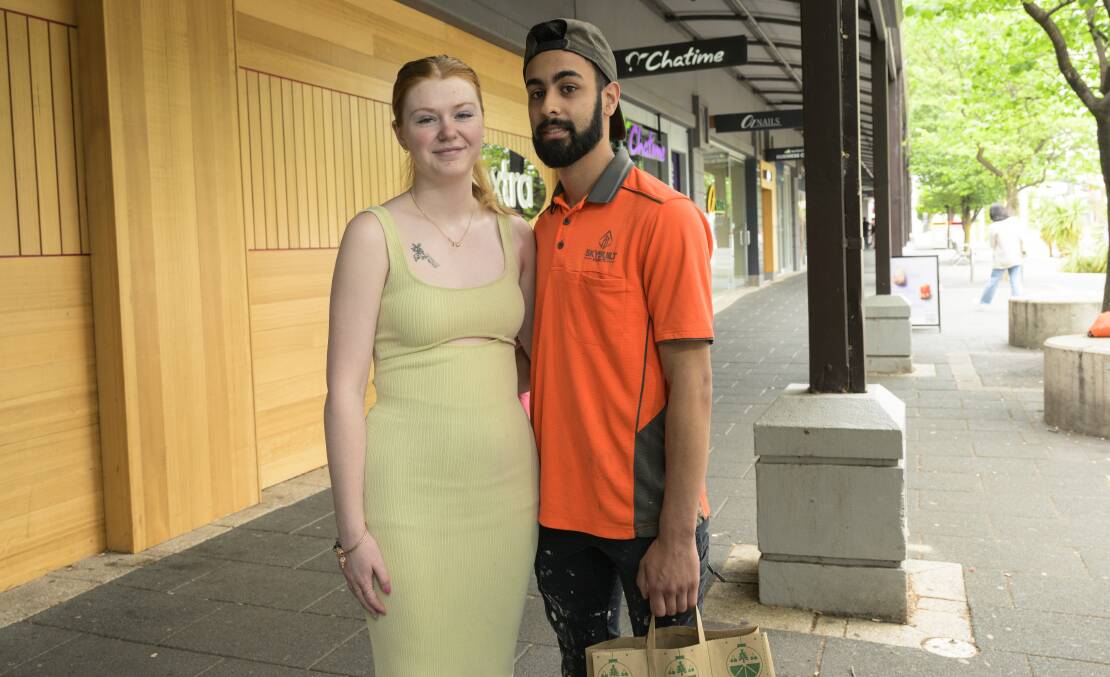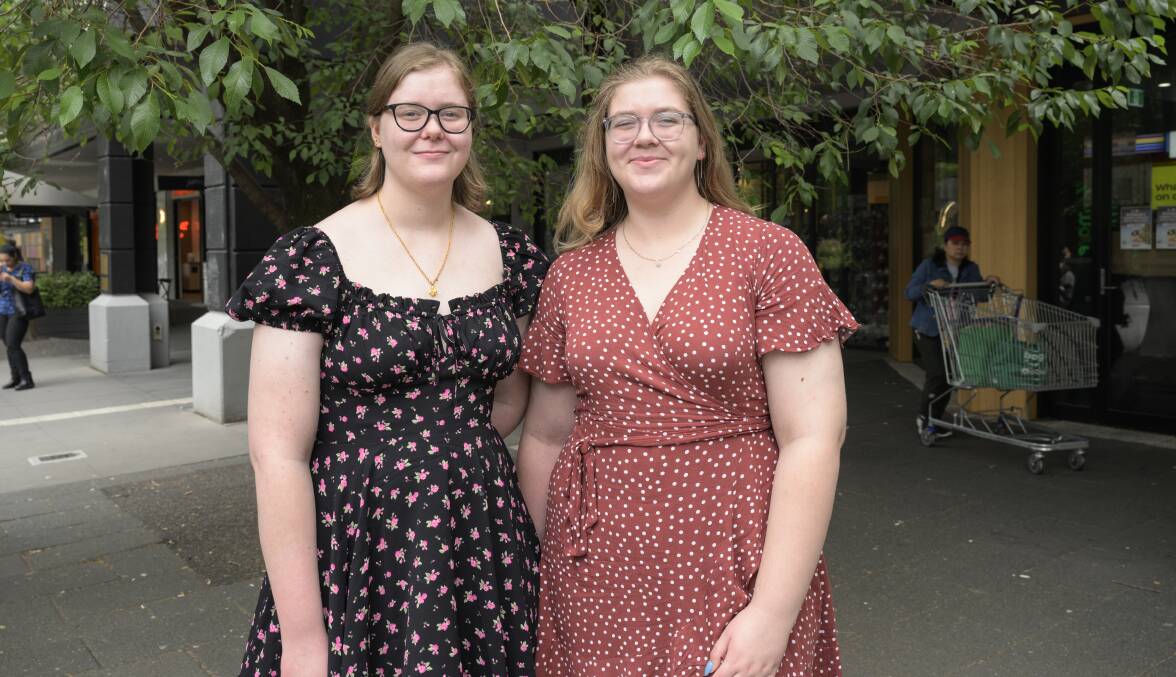It's young adults, like Nick Vaxevani and Montannah Harrison, who are bearing the brunt of soaring housing and living costs.
They are, a new report shows, cutting back heavily on spending on discretionary items like clothes, and even on essentials, as they struggle to make ends meet.
The Canberra Times talked to several young people in Gungahlin. They say they are feeling the sting as they continue to navigate significant cost-of-living pressures brought about by rising interest rates and significant geopolitical events in the last two years.

Mr Vaxevani and Ms Harrison just moved into their new studio apartment in Gungahlin. After spending weeks searching and bargaining with landlords, they finally secured their home.
"It took us a very long time and it was a stressful process, there's a stigma that young renters are reckless and like to wreck things but we're not like that," Ms Harrison said.
The young couple are hoping things will improve before they begin to think about starting a family and try entering the property market.

"I'm excited to see where things go and hopefully things come down in price soon, that's for sure," Ms Harrison said.
The CommBank report finds that middle-aged households are also feeling the pinch, if not to the same extent. Those in their 30s have trimmed their overall spending by around 1.4 per cent while those in their 40s and early 50s have cut back on discretionary spending and the amount going on essentials has not kept up with inflation.
Even people in their late 50s and early 60s are falling behind, with the amount going on essentials and discretionary items being outpaced by the increase in prices.
The only ones to have pumped up their outlays are those at retirement age and older, who significantly increased the amount they spent on eating out, travel and other optional purchases.
Since graduating from high school, 25 year olds today have faced a global pandemic, indexation of university debt and a housing crisis.
People aged 25 to 29 slashed their expenditure by 5.1 per cent in the past year - more than 10 per cent when taking into account inflation - by far the biggest pull back of any age group, and the only ones to cut their spending on both essentials and discretionary items, according to an analysis by Commonwealth Bank of purchases by around 7 million customers.
The one area where they have splashed out is entertainment, spending on which jumped by 13 per cent as major events and one-offs like the FIFA Women's World Cup, Taylor Swift concerts and the Barbie film enticed them to loosen their budgets.
The data shows that those in their late 20s have cut their spending on essentials like food and medicine by 3.7 per cent in the past year and have slashed purchases of clothes, household goods and other discretionary items by 6.2 per cent.
The data in the CommBank study was living reality for Gungahlin sisters Courtney and Simone Kisnorbo.

"I've seen petrol over the last two years go from $40 a tank to $80, groceries have gone through the roof, I can't afford to buy snacks anymore - a packet of chips costs $8, it's crazy," the sisters said.
Courtney decided to delay her university education for the time being because she couldn't justify the cost of a university degree.
The number of Australians enrolled in bachelor's degrees has fallen 12 per cent in less than decade and Melbourne University's Taking the Pulse of the Nation report found financial barriers were the greatest obstruction to young Australians pursuing higher education.
"It's extremely hard to save, especially with the cost of everything going up, I don't think we will ever be able to afford a home, it's a real kick in the guts," Simone said.
Separate research by National Australia Bank adds to evidence of how many households are adapting to deepening financial pressure.
A survey of more than 2000 people found that more than 40 per cent of adults aged 29 years or younger have cancelled streaming services and other subscriptions this year, saving around $900.
But NAB personal banking executive Kylie Young said many were choosing to maintain subscriptions to newspapers, magazines, audio books and apps like those for dating.
"Australians are choosing to stay informed, connected and they're prioritising spending on premium lifestyle subscriptions including news, magazines and even paid dating apps over streaming," Ms Young said.
Erin Winters is another person in Gungahlin struggling with the cost of living. The 27-year-old had to move back in with her parents to save money.

"Even though I'm working full-time I decided to move back home, it's much easier and I want to buy my own home so I'm hoping to save some money while I'm back with my parents," Ms Winters said.
Meanwhile Gungahlin Marketplace was teeming with young families shopping in the afternoon, as businesses hopefully prepared for a prosperous festive season.
Atlas Cafe owner Tristan Morthorpe was one of many small business owners in the area who was feeling the squeeze and he has noticed his customers spending less.

On days when it should be busy, Mr Morthorpe said it was dead quiet; people are pinching their pennies because they don't have any other choice.
His business survived the pandemic but with successive interest rate rises and commercial rents continuing to increase, he's not sure what Christmas is going to look like.
"Where do you go when you start to lose things that Canberra has built up over time?" Mr Morthorpe said.
The CommBank data highlights how unevenly the pressure from high inflation, rising housing costs and surging interest rates are being felt across society.
Overlaying the differences by age is a significant city-country divide.
Spending across regional Australia grew by 2.9 per cent in the year to September, more than double the 1.2 per cent pace in metropolitan areas.
CommBank iQ head of innovation and analytics Wade Tubman said the city-rural divide was starkest in NSW and Victoria, underscoring the impact housing costs was having.
"We've seen lower or negative discretionary spending growth in metropolitan NSW and Victoria, where many people are grappling with higher rents and mortgages," Mr Tubman said.







